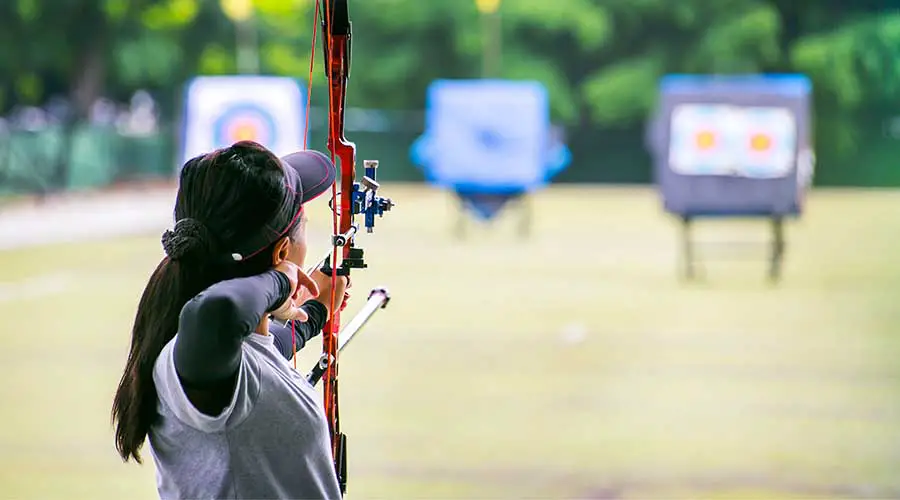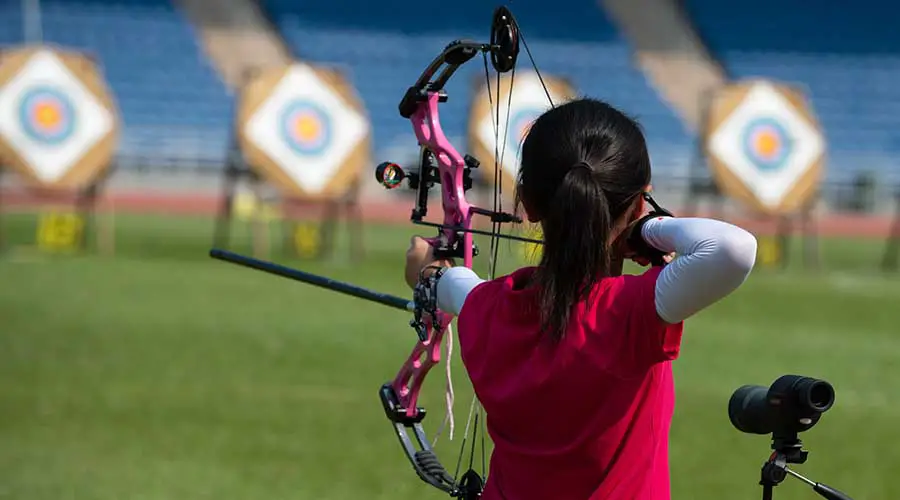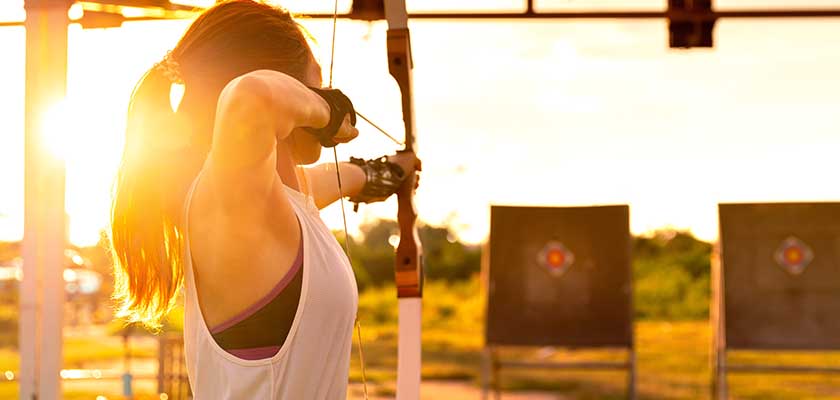One of the oldest sports still active is archery. The sport began in ancient times, when archery was commonly used by men for hunting and war.
Over the decades, archery began to become a practice that went beyond necessity and was also used for leisure. Then, in the middle of the 16th century, the rules of archery were defined and the first tournaments began to be held.
The first recorded archery championship dates back to 1673, and the most modern form of the sport took place in 1844 in Yorkshire, England. That same year, the Grand National Archery Society was born in the UK, the first club in the sport.
Archery only became an Olympic sport in the 1900s, in Paris, and remained so in 1904, 1908 and 1920. It wasn’t until 1972, in Munich, that the sport returned to the Olympic Games and never left.
Archery arrived in Brazil in the 1950s, but it wasn’t until 1991 that the Brazilian Archery Confederation was founded.
Now that we know a little about how the sport came about, it’s time to understand the rules of archery. The rules of the sport consist of stance, aim, target, scoring, clothing and much more.
Check them out 👇
Rules of archery: goals

The main goal of archery is to hit the target exactly in the center to get the maximum score. In fact, any place on the target is scored, but the closer to the middle the better.
When the bow hits the target, the players check the points obtained, mark the spot that was shot and write the points down on a spreadsheet. Then they must remove the arrows.
According to the rules of archery, the referees are responsible for checking the equipment before the competition to make sure there are no problems. The judges will look at the curve of the bow, which must be no longer than 2 centimeters, and the toes, which must not have any tools or hooks.
Rules of archery: target zone and phases
The closer you get to the inner zone, the more chances an archery player has of scoring. This score is divided into ten zones, with 1 being the furthest from the middle and 10 the closest, and they are divided into five different colors.
Here’s what the target’s score looks like with each color, from the outside to the inside of the central circle:
- White zone: 1 and 2 points;
- Black zone: 3 and 4 points;
- Blue zone: 5 and 6 points;
- Red zone: 7 and 8 points;
- Yellow zone: 9 and 10 points.
The rules of archery involve qualifying and knockout stages. In the first phase, the competition bracket is defined, organizing who will face whom in the second phase, the knockout phase, and so on until the winner is determined.
Rules of archery: indoor and outdoor competition
Archery competitions take place indoors and outdoors. Each type of competition has different rules, here’s how!
Outdoor archery
In the outdoor archery competition, in open spaces, each archer can score a maximum of 720 points during the qualifying phase, which consists of 72 shots. This amount is divided into two rounds of 36 shots each, and each of these rounds has six series.
In each series, the players have four minutes to fire six shots. At the end, in the combat phase, two archers face off by shooting three arrows in just two minutes. The one with the highest score takes two points in the competition, and in the event of a tie the points are split.
In this phase, according to the rules of archery, the aim is to accumulate six points, advancing in the bracket and heading for the final. In the outdoor discipline, competitions are held in the following categories:
- Children (up to 14 years old) – shots at a distance of 30 meters;
- Cadet (15 to 17 years old) – shots at a distance of 60 meters;
- Juvenile (18 to 20 years old) – shots at a distance of 70 meters;
- Adult (21 to 49 years old) – shots at a distance of 70 meters;
- Master (over 50 years old) – shots at a distance of 60 meters.
Indoor archery

In indoor archery, which takes place indoors, 60 shots are made during the qualifying stage of the competition, and the maximum score is 600 points.
The rounds are divided into two rounds of 30 shots, with 10 sets of three shots each. Competitors may not shoot for more than two minutes. The age group rules are different from the outdoor discipline, with a fixed distance of 18 or 25 meters.
Rules of archery: equipment
To compete in archery, players need very specific and essential equipment. They are the bow, of course, arrows, bracelet, armband, thimble and quiver. Learn more about each item:
Bow: according to the rules of archery, the bow must be made of synthetic material. It has a string attached to two blades which, in turn, are joined to a sight, a stabilizer, a pull clicker, a sight and a spring-loaded pin called a button.
Arrows: the arrows to be shot must be made of aluminum, carbon, mixed or wood. Characteristics such as size and weight vary, and everything will depend on the archer’s needs. At the back, the arrows have feathers to help stabilize the shot.
Wristband: wristbands attach the archer’s wrist or forearm to the bow.
Armband: in archery, armbands are worn on the forearm to prevent contact with the string from causing injury to the competitor.
Fingertips: Fingertips are worn on the archer’s fingers and are intended to help pull the string and support it, as well as protecting the fingers.
Quiver: finally, archers play with a pouch attached to their waist called a quiver, used to store their arrows.
Rules of archery: positions

To play archery, players need to use their feet to create stabilization in their stance, while keeping their legs bent and their hips aligned. They must not forget to level and relax their shoulders, keeping their arm straight towards the target.
The archer also needs to keep the bow stable and steady, and this is also possible thanks to proper breathing during the shots.
The rules of archery are simple and just need to be followed correctly to do well in competitions. You need to be stable in the pose and have a lot of concentration to shoot the arrow as close to the center as possible.
Did you enjoy learning about the rules of the sport? Take the opportunity to check out more information on a wide variety of sports here, and don’t forget to comment!
- Badminton rules: how to play, serves, equipment and more
- Canoeing rules: modalities, classes, distances and more
- All about the Olympics: history, types, characteristics and curiosities
- All about the Paralympics: history, disciplines, categories and more
- Olympic record medalists: who they are, countries, sports and medals



